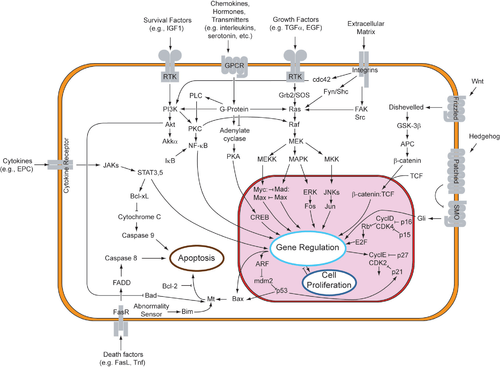Cellular signaling encompasses a diverse array of mechanisms that cells use to communicate and coordinate their activities. Signaling can occur through several pathways, including autocrine signaling (where a cell signals itself), paracrine signaling (where a cell signals nearby cells), and endocrine signaling (where signaling molecules are released into the bloodstream to act on distant cells).

At the molecular level, cellular signaling often involves the binding of signaling molecules, such as hormones or growth factors, to specific receptors on the cell surface. This binding event triggers a series of events within the cell, known as signal transduction, which may involve the activation of enzymes, second messengers, and changes in gene expression. These signaling pathways are highly regulated and can interact with each other to form complex networks.
Cellular signaling plays a critical role in many physiological processes, including cell growth and differentiation, metabolism, immune response, and cell death. Dysregulation of signaling pathways can lead to various diseases. For example, aberrant signaling in the insulin pathway can result in diabetes, while dysregulated growth factor signaling is implicated in cancer.
Studying cellular signaling is challenging due to its complexity, but advances in techniques such as molecular biology, microscopy, and computational modeling have greatly enhanced our understanding of these processes. This knowledge is crucial for developing new therapeutic strategies that target specific components of signaling pathways to treat diseases more effectively.
For more information , watch this video
